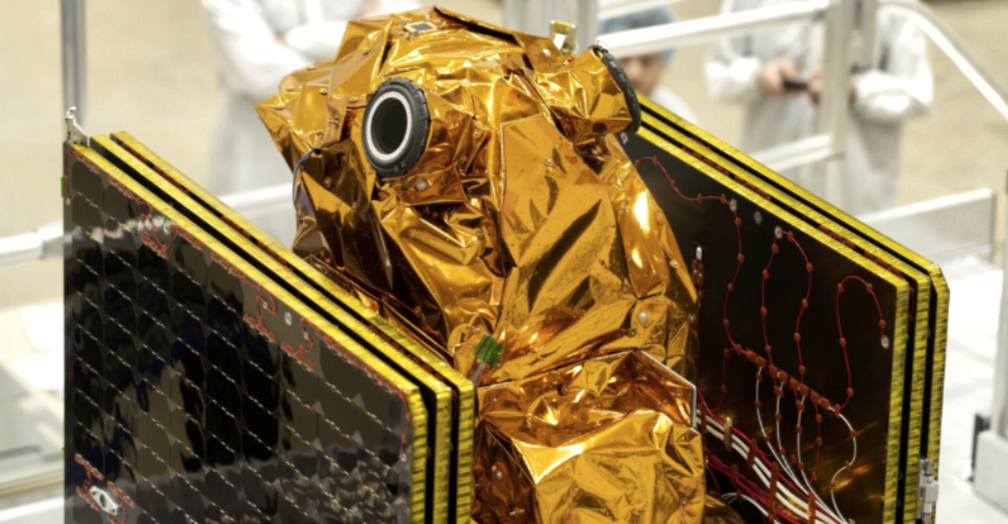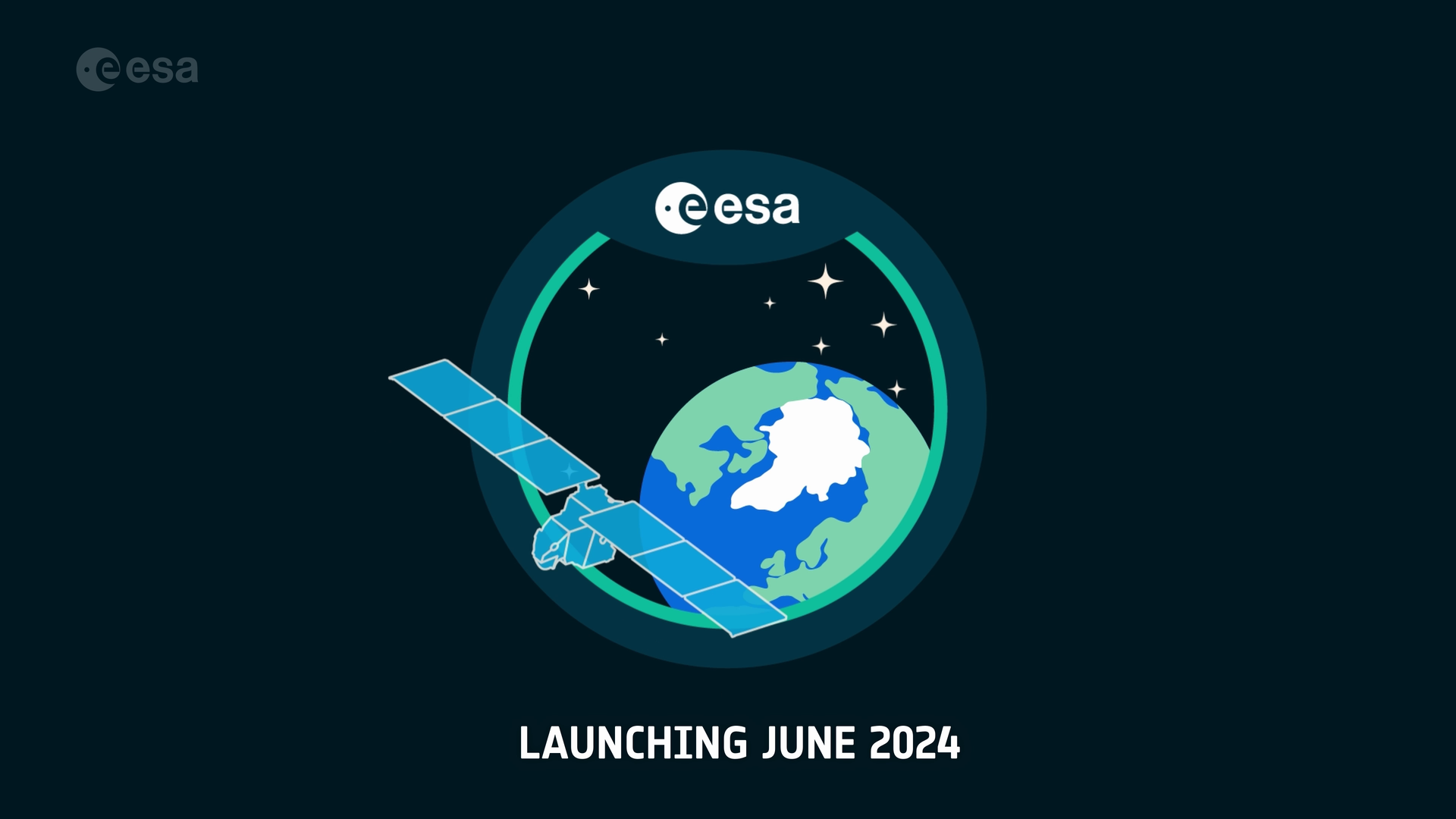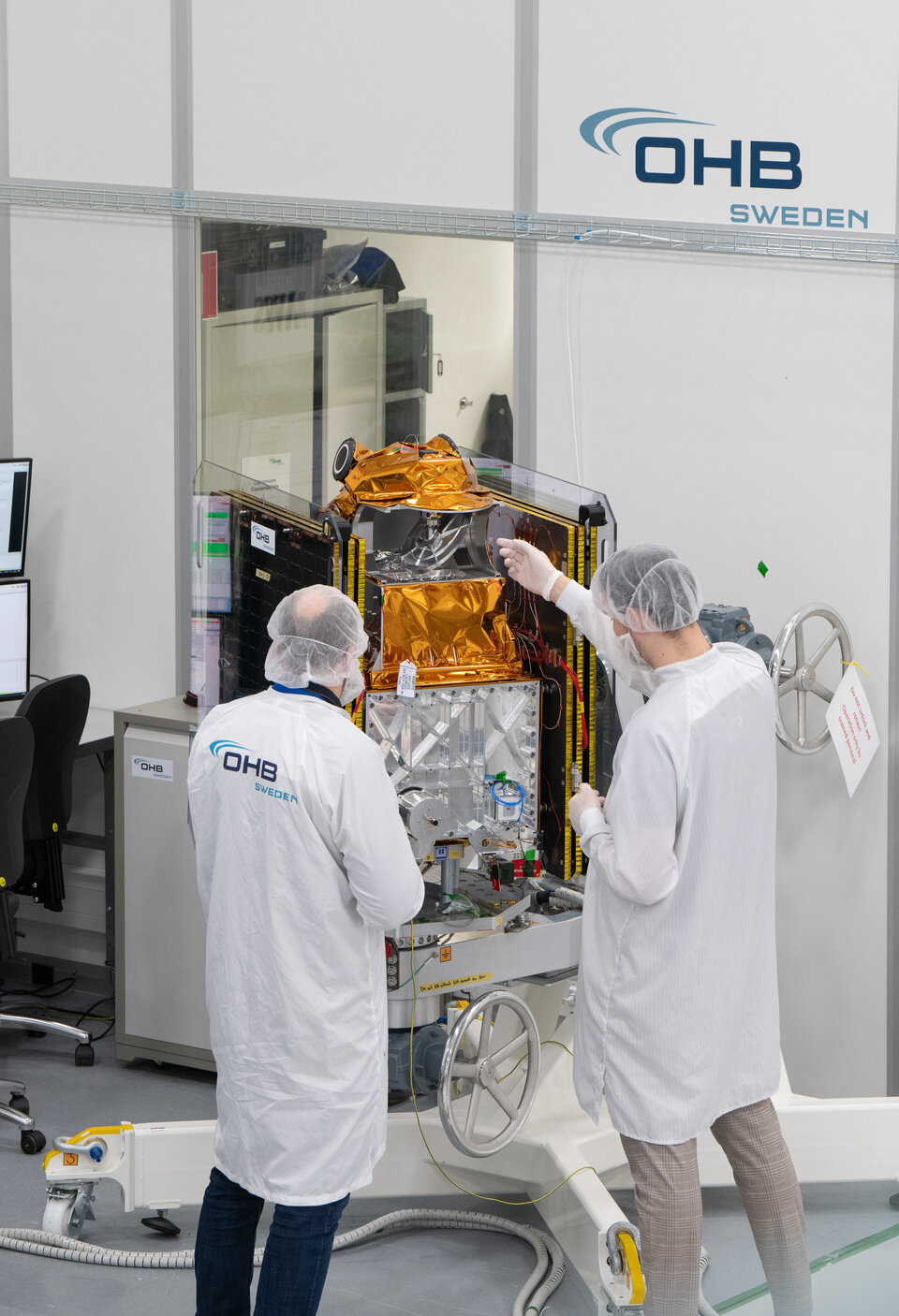ESA’s new Arctic Weather Satellite has taken center stage at OHB’s facilities in Stockholm, Sweden, before the spacecraft is packed up and shipped to California for a launch currently scheduled for June.

Embracing the New Space approach to demonstrate new concepts in a cost-effective and timely manner, the Arctic Weather Satellite has been designed to show how it can improve weather forecasts in the Arctic.
Today, satellites provide a wealth of information that meteorologists use routinely to forecast the weather. Geostationary satellites, which are positioned 36,000 km above the equator, do not have visibility over higher latitudes, so cannot be used for Arctic weather forecasting.
While the MetOp satellites return data over the poles, they can take up to 24 hours to achieve global coverage – which limits data for short-term weather forecasts worldwide.
Enter the Arctic Weather Satellite: a new prototype mission that will demonstrate that it can fill this gap – providing data for very short-term weather forecasts and nowcasts in the Arctic.
The satellite is currently in its last stages of being checked and readied for shipment by air to California ahead of its launch. Before it embarks on its journey, the satellite has been on display in the cleanroom at OHB Sweden – the prime contractor for the mission.
The Arctic Weather Satellite weighs just 120 kg and carries a 19-channel cross-track scanning microwave radiometer which will provide high-resolution humidity and temperature soundings of the atmosphere in all weather conditions. Its enhanced sounding will capture short fluctuations in humidity that can be used to better infer wind information for tracking storms and extreme weather.
The Arctic Weather Satellite is the forerunner of a potential constellation of satellites, called EPS-Sterna, that ESA will build for Eumetsat if the prototype works as expected.
EPS-Sterna is envisaged as a constellation of six smallsats in three orbital planes to supply an almost constant stream of temperature and humidity data from every location on Earth.
While weather forecasting for the Arctic region is the focus, data from the Arctic Weather Satellite and the potential constellation will also be used to improve weather forecasts around the world and contribute to climate change research.
The Arctic Weather Satellite has been developed and built on a tight schedule: it has taken just 36 months from ESA awarding the industrial prime contract to OHB in Sweden and the satellite being completed.
ESA’s Director of Earth Observation Programs, Simonetta Cheli, said, “The effects of the climate crisis are being felt more in the Arctic than in other parts of the world. We know that what happens in the Arctic doesn’t stay in the Arctic: changes in this delicate icy ecosystem affect the Earth system as a whole. We are extremely excited to see the Arctic Weather Satellite ready to demonstrate its capabilities and allow, for the first time, nowcasting in the Arctic, for the benefit of weather prediction and climate change worldwide.”
Benoit Mathieu, Managing Director at OHB Sweden, said, “We are proud that ESA entrusted us this mission. After 36 months of contract, the satellite is at the stage as planned at contract signature. This is a tremendous success and underlines our reliability as a small satellite manufacturer. This was made possible by the flight proven heritage of our InnoSat platform, the engagement of our teams and of the entire supply chain, and the very good collaboration with the ESA team which fully embraced the New Space approach.”


